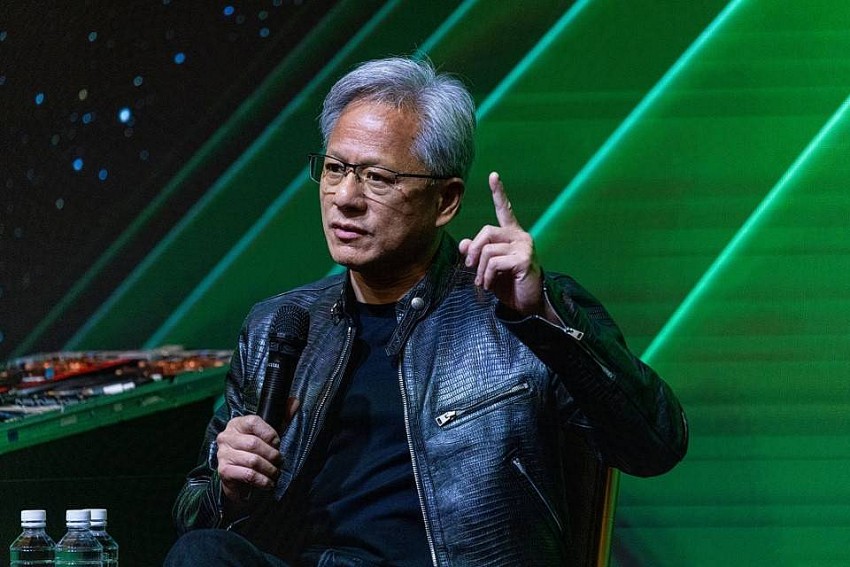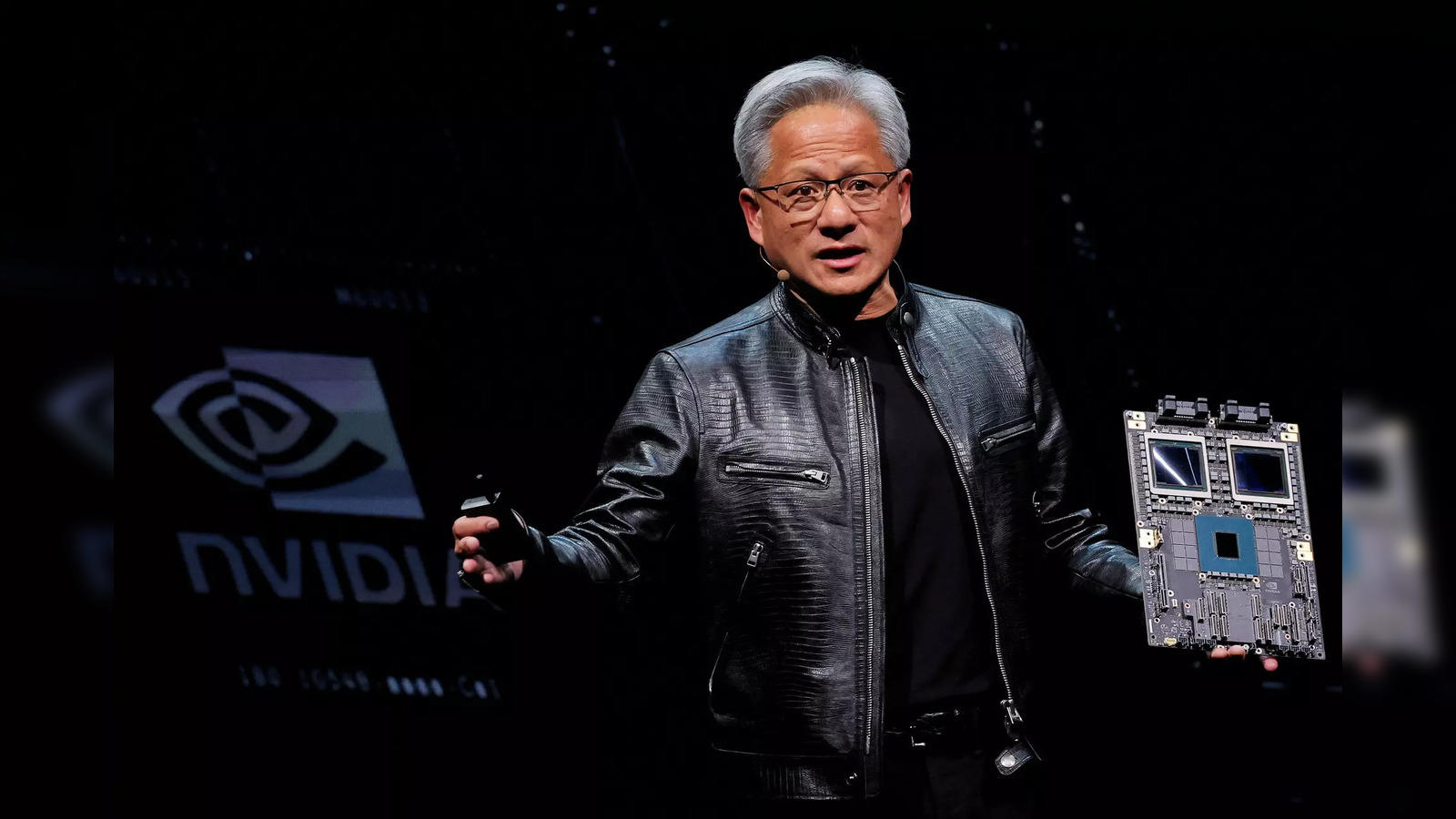As the technology world converges at the annual Consumer Electronics Show (CES) in Las Vegas, Nvidia has once again solidified its position at the forefront of innovation. On January 6, 2025, CEO Jensen Huang delivered a compelling keynote, showcasing a series of groundbreaking products that span multiple industries, including artificial intelligence (AI), gaming, automotive, and robotics. These new offerings are not only poised to shape the future of computing but also promise to drive Nvidia’s expansion into new markets and elevate its already dominant presence in the tech industry.
Here's ads banner inside a post

AI and Robotics: A New Era of Training Technology
One of the most striking announcements from Nvidia at CES 2025 is the launch of the Cosmos foundation models, which are designed to revolutionize the way robots and autonomous vehicles are trained. These models use AI to generate photo-realistic video, significantly reducing the cost and time required to train robots and self-driving cars. Unlike traditional methods, which involve gathering large amounts of real-world data, such as recording video from cars driving on roads or having humans manually teach robots repetitive tasks, the Cosmos models create synthetic training data based on text descriptions.

Here's ads banner inside a post
This synthetic data is not only cheaper to produce but also offers a more efficient way to simulate various real-world scenarios. The AI-generated video follows the laws of physics, providing a realistic environment for robots and cars to learn from. This is particularly beneficial for industries where safety and precision are paramount, such as robotics and autonomous driving. The Cosmos foundation models are expected to democratize access to high-quality training data, similar to how Meta’s Llama 3 language models have become a popular resource in enterprise AI development.

Nvidia’s new approach could drastically cut costs for industries that rely on robot and vehicle training, creating opportunities for smaller companies to access powerful tools once reserved for the largest corporations. While analysts, such as Vivek Arya from Bank of America, remain cautious about the long-term impact on Nvidia’s sales, there is no denying the potential of Cosmos to drive innovation in industrial AI.
Here's ads banner inside a post

Next-Gen Gaming Chips: The RTX 50 Series
Another major highlight of Nvidia’s CES 2025 presentation was the unveiling of the RTX 50 series, the latest iteration of the company’s gaming graphics cards. These new chips, which leverage Nvidia’s Blackwell AI technology, promise to deliver an immersive gaming experience with movie-like graphics. The RTX 50 series is designed to enhance the realism of video game visuals, particularly in areas like shaders, where small details—such as the imperfections on a ceramic teapot or fingerprints on a surface—are added to create lifelike images.

The new gaming chips are also aimed at improving the accuracy of human faces in games, an area where even small imperfections can break the immersion for players. With prices ranging from $549 to $1,999, these chips will be available in various configurations, with the top models hitting the market by January 30, 2025, and lower-tier versions following in February. Industry experts believe that the new RTX 50 series will boost Nvidia’s short-term sales, especially as gaming continues to grow in popularity and demand for high-performance graphics cards remains strong.
Project DIGITS: Nvidia’s Bold Move into Desktop Computing
For the first time, Nvidia is entering the desktop computer market with the introduction of Project DIGITS, a high-performance machine designed specifically for computer programmers and AI developers. Unlike traditional consumer PCs, Project DIGITS is built with software developers in mind and is intended to accelerate the development of AI systems. The desktop, priced at $3,000, will run on Nvidia’s own operating system based on Linux and will feature the company’s advanced data center chips, paired with a processor developed in collaboration with Taiwan’s MediaTek.

This move represents a significant step for Nvidia as it expands its reach beyond gaming and AI-powered data centers into the broader computing market. The machine is designed to help developers quickly test and deploy their AI models, making it an attractive option for professionals working on cutting-edge technology. The desktop will be available in March 2025, and it is expected to be well-received by AI developers seeking a powerful, customizable system to accelerate their work.
Automotive Advancements: Nvidia Partners with Toyota
Nvidia’s influence extends into the automotive sector as well, with the announcement that Toyota will use Nvidia’s Orin chips and automotive operating system to power advanced driver assistance systems (ADAS) in several of its vehicle models. While the company did not provide specific details on which models will feature the new technology, this partnership underscores the growing importance of AI and robotics in the automotive industry.

Nvidia’s automotive business is on track for significant growth, with the company forecasting $5 billion in revenue from this sector in fiscal 2026, up from an estimated $4 billion in the current year. This expansion is indicative of the increasing demand for AI-powered solutions in the automotive space, particularly as self-driving technology continues to evolve. Nvidia’s leadership in this area positions it as a key player in the ongoing transformation of the transportation industry.
Nvidia’s Record Stock Performance
Nvidia’s stock has been on an impressive upward trajectory, closing at a record high of $149.43 on January 6, 2025, bringing the company’s valuation to $3.66 trillion. This makes Nvidia the second-most valuable company in the world, trailing only Apple. The company’s dominance in the AI and semiconductor industries, combined with its expanding presence in gaming, automotive, and robotics, has propelled its market value to new heights.

As Nvidia continues to innovate and push the boundaries of technology, it is well-positioned to capitalize on the growing demand for AI, high-performance computing, and robotics. Its strategic moves at CES 2025 highlight the company’s ability to stay ahead of the curve and maintain its competitive edge in an increasingly complex and dynamic tech landscape.
Looking Ahead: The Future of Nvidia and AI Technology
Nvidia’s latest announcements signal an exciting future for the company and the tech industry as a whole. With advancements in AI, gaming, robotics, and automotive technology, Nvidia is set to play a pivotal role in shaping the next generation of computing. Whether it’s through the Cosmos foundation models that promise to revolutionize AI training, the RTX 50 series that will elevate the gaming experience, or the collaboration with Toyota that will push the boundaries of autonomous driving, Nvidia’s innovations are poised to have a profound impact on multiple industries.

As the world continues to embrace AI and automation, Nvidia’s cutting-edge technologies are positioning it as a leader in the AI-driven future. Whether you’re a gamer, a software developer, or an industry professional, Nvidia’s latest products offer a glimpse into the future of computing, where AI, robotics, and high-performance hardware are increasingly intertwined. With its continued focus on pushing the boundaries of what’s possible, Nvidia is well on its way to maintaining its leadership role in the tech world for years to come.
In conclusion, the unveiling of these groundbreaking technologies at CES 2025 marks a new chapter in Nvidia’s evolution. As the company extends its reach across diverse industries, it is clear that Nvidia’s commitment to innovation will continue to shape the future of technology for years to come.

